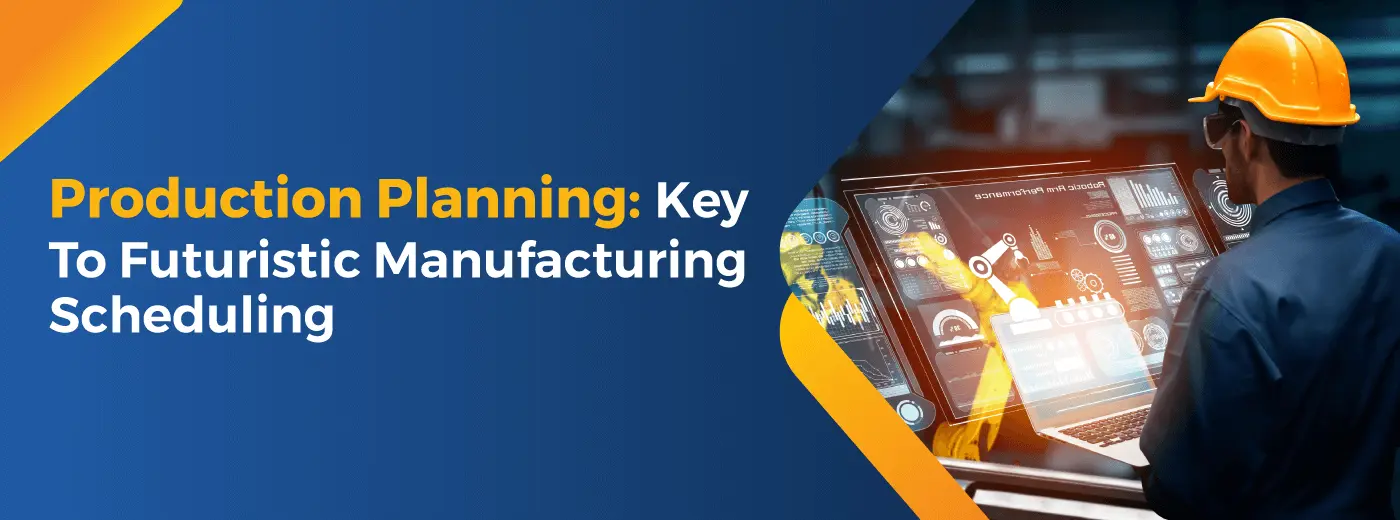Throughout the years, manufacturers have been on a quest to improve their operations by increasing productivity, managing their inventory, and optimizing their resource utilization. These are some of the main challenges faced by manufacturers. Many strategies have emerged as solutions to allow manufacturing operations to improve their overall production efficiency.
One such strategy is Production Planning and Control (PPC), which is a term used to describe two essential components of manufacturing: production planning and production control. The production planning portion handles the activities necessary before production actually begins, such as materials planning, capacity planning, and operations scheduling. The production control portion oversees the actual production process by ensuring that the production team is able to meet its production targets and is operating according to schedule.
Overall, production planning and control can play a substantial role in production through schedule optimization, waste reduction, and cost minimization.
The pandemic outbreak has been a significant eye-opener, especially as far as production planning goes. The pandemic has shown us how unprepared our supply chains are when it comes to coping with the major calamities like this one.
In a pandemic situation, the demand of essential products increases expressively; on the other hand, the supply of the raw materials in manufacturing units decreases considerably with a constraint of production capacity. These dual disruptions impacted the production process suddenly. Due to the outbreak, the supply chains have collapsed all over the globe. So, before we further discuss how to avoid these impediments, Let us first try and understand what production planning process is all about.
The first step towards customer satisfaction starts with production planning. If you can’t deliver goods to the customer on time, the first impression gets messed up. Secondly, production planning system doesn't apply only to someone just starting; it applies to everyone, no matter how old you are in the business. In short, production planning is the path that helps supply meet demands.
We offer comprehensive services designed to simplify the complex responsibilities to fulfill Your organizational needs.
Importance Of Production Planning For Organizations
Production planning starts with understanding the demand in the market. Once the need is known, we now have to begin with backtracking the entire process. Here, the production plan comes into the picture. The production plan serves as a reference or a guide and lists down the sequence of activities starting from acquiring the raw materials leading to the delivery of the final product. Having a production plan helps a lot of ways, some of which are listed below –
Provides a clear understanding of who needs to do what along with where, when, and how.It helps with the reduction in the production time and proportionally the cost too. It helps in discovering new ways for making the process flow more efficiently.
Understanding and reduction of the waiting time between operations Optimal usage of machine or equipment as well as inventory.
Also, another fundamental aspect is ensuring that production planning is done keeping in mind the business goals and the business strategies or plans that are already in place.
Key Drivers Of Production Planning
Now that we have more clarity, what can production planning do for us? Or, how a production plan helps in building efficiency? Let us now understand the essential components of production planning or the production plan.
There are five main components when it comes to the production plan, which is listed below.
1. Planning
Planning or scheduling is vital for maintaining the demand flow with the optimum utilization of the company's resources. By taking time to plan and schedule the entire process beforehand, you can mitigate the risks, reduce the bottlenecks, and thus optimize the production line.Dynamic planning- Dynamic planning comes into play when the output needs to be customized for every order. Here raw materials or the inventory is stocked so that the order is ready as soon as it is received.
Static planning- Static planning comes into play when the output is constant, and there are no changes anticipated.2. Routing
Routing plays a key role when the final output requires a series of processes, even for the last input materials. These pre-processed raw materials can either be produced in-house or need to be outsourced. It is imperative to know the exact quantities necessary and when the acquisition would occur in both cases. Ensure that you include both the in-house and the subcontracted processes and materials here.
3. Scheduling
As the name suggests, scheduling is the final established plan that directs the final raw materials to the final product for dispatching. The critical part of scheduling is that it needs to be time-based and ensure that it satisfies the demand.
4. Dispatching
Dispatching occurs when the company is manufacturing a product that has slight variations between each model. Here the dispatching will decide the next model to be built in the production line. It ensures that the queue for the variations is set up correctly and the required raw materials for the process have been acquired.
5. Execution
The final execution is thoroughly dependent on the proper scheduling of the job at hand. It ensures that all the processes have been completed with the strictest quality and maintains the intended timeline for the delivery of the final product.
Best Practices For Production Planning
The correct and the most robust production planning completely changes and makes the business more efficient. In addition to the elements mentioned above, when you are working on building the production plan, remember to keep the following pointers in mind –
#1. Effective Utilization Of ResourcesProduction planning results in the effective use of materials, plant capacity, equipment, and manpower. At large, it maximizes the available resources resulting in high returns. For some organizations, resource management can now be automated using the best Material requirement planning (MRP) software solution for their existing operations. It is an essential tool for organizations to make business flow in the management of scheduling and supplies an easy and systematic process. In planning there are three questions being answered:
What is needed? How much is required? When is it needed? With automation mechanisms in place, the process of answering these questions- the organization can get a clear picture of the demand for labor and its supplies, thus, improving and enhancing overall business operations. #2. Make Accurate ForecastFor every organization, the forecast is important because it allows the company to allot a budget for the materials and labor needed. Also, forecasting will assist organizations to determine sales, especially when ROI happens and when gross revenue will be felt by the organization. Forecasting will let organizations make sure that they will not run out of resources and supplies even when customer demand gets doubles. This will dictate which resources should be on the priority list.
#3. Know Your CapacityA lot of the production planning also depends on correct capacity planning. You need to be aware of the capacity of your operation. How many resources, i.e., both equipment and labor, are required for X amount of products. If this is not known, you are trying to aim in complete darkness and expecting to hit a bulls-eye.
#4. Implement Better Inventory ControlInventory control is one of the crucial parts of production planning. It is frequently looked at as a minor subset of supply chain management; In short, it is a method to reduce waste in the production process. Aside from determining the minimum level of stock, a company can maintain safety against a balloon in customer demand; inventory control looks at the costs associated with maintaining inventory, both of raw materials and finished products. Inventory control is affected by changes in holding costs, consumer demand, ordering costs, and back-order costs.
Conclusion
Therefore, running high-quality products off the production line and getting them to customers on time is the goal of any product-based organization. Doing this consistently is difficult, especially when uncertainty is added to the mix. A dedicated planning process effort can help prevent future production problems and improve margins by increasing operations efficiency. At Polestar Solutions, we offer comprehensive services designed to simplify the complex responsibilities organizations are facing in Production. We have a team of leading experts capable of providing the best advice and solutions for your business. Schedule a demo now!



